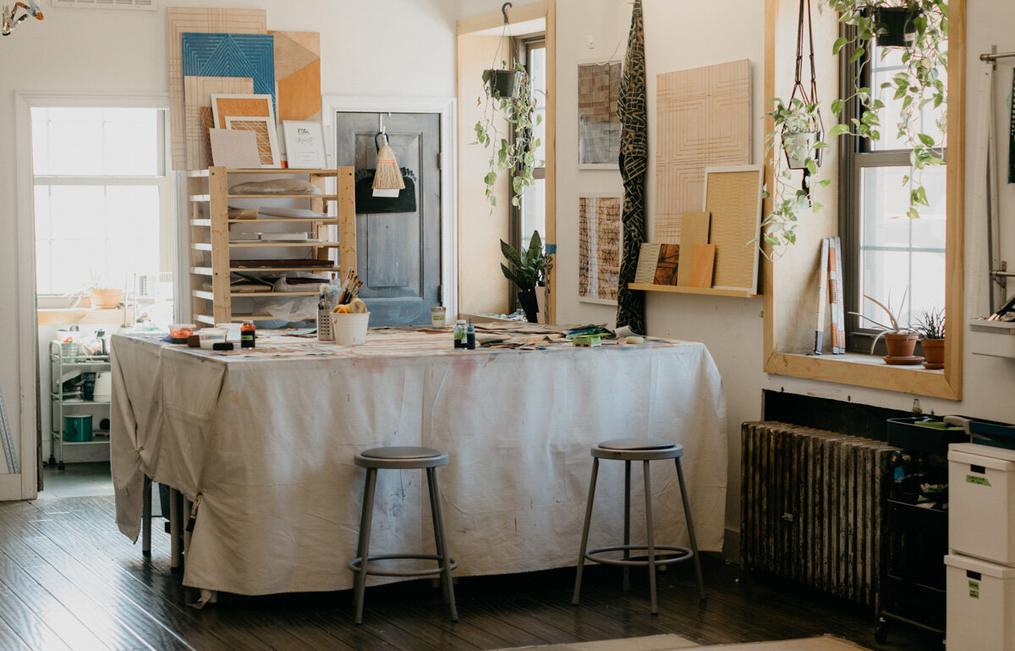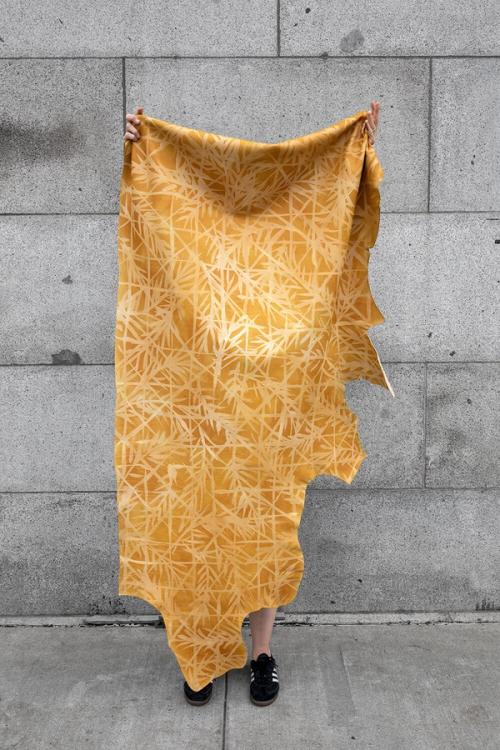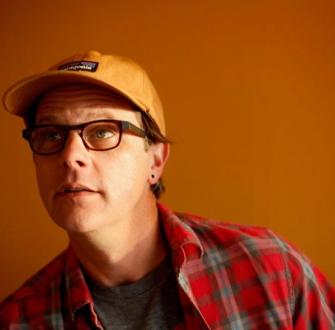
Craft: Brit Kleinman
To kick off our craft series, we spoke with Brit Kleinman, Founder and Design Director at AVO about her process, her views on materiality, and the beautiful hand-painted work she custom created for our Twin Peaks project.
How do you first start honing your craft? What originally drew you to weaving and upholstery?
All my work at AVO started where all of my favorite things start – with play. My art is inspired by a variety of different things from my life and career, all aspects are self-taught and have been created and grown through experimentation.
My mom was a textile artist, and as a kid I loved weaving and baskets, and crafts. I have also always been a painter and studied textile design in college. I’ve worked as a designer for a variety of products and brands – I’ve worked in luggage design, I was a bag designer at Jack Spade, I’ve done consulting with Shinola and Casper – I’ve always loved creating unique, personal, wearable goods and I tend to come up with techniques that don’t exist yet.
AVO started with trial and error– with my dyed leather materials, I spent a long time experimenting with paint, seeing what worked and what didn’t, and performed a lot of research. The weaving started with a basic loom and grew from meeting with and learning from incredible production weavers all over the US. If you’d told me ten years ago that I’d be here I would have laughed!
Tell me about your process. How closely do you work with your clients to iterate your designs? Where does the initial inspiration come from?
I love designing pieces for tailored spaces and experiences. I like to start by asking my clients to send me a mood board, and describing the big picture – how is this piece going to be used? Who are you and what interests you? How can our visions align and what excites the both of us? I often think in terms of sensorial experiences and creating a focal point in a space- something that people want to walk up to, inspect, touch, and experience. All of our work is custom, and we aren’t particularly interested in recreating a piece that has already been made for another space.
How do you source the materials you work with? Do you source with sustainability and locality in mind?
I think about this a lot because materiality is very important to me. It’s often overlooked that leather is a biproduct of the meat industry – we only choose to work with leather that is a biproduct. 90% of our leather comes from US steers, and we use tanners in Brazil, Italy, and Spain, who embrace the leather’s natural characteristics that most people like to edit out, that’s what I think gives its piece individuality and beauty.
The health of my employees and clients is also top of mind, we are careful to dye all our work in house with water-based dyes – it’s important for me that my team is not working with anything toxic.
My approach to sustainability is making work that not only lasts, but gets better with age, and working with materials that are sustainable within their own cycle. Leather is biodegradable, and goes back into the earth unlike vegan leather, or other synthetic alternatives. It’s funny, because leather is considered a luxury good, but in reality, is a super economic, durable material, that we have been using for centuries. Leather self-heals, and the more you use it, the better it looks.
How does materiality, in an aesthetic sense, influence your practice?
Materiality is where I start most of my designs – not sketching on a piece of paper, but instead picking up a swatch and experimenting with dyes. Each material I work with reacts differently and is uniquely beautiful, I try to have a dialogue with it.
Working with leather reminds me of pottery or woodworking – each material has a life of their own and pushes back. Some days it’s hot and the clay is cranky, leather is the same way – each one is unique, and that dialogue is what makes it exciting. There is beauty to be had in that repetition, I’m always learning from the materials I work with.
Our studio deeply values working with makers and artisans who are experts in their craft. What is special to you about handmade, high-quality, custom goods?
Integrity is what comes to mind – handmade goods have this inherent sense of integrity. It reminds me of the phrase “Perfect isn’t that great.”
Not that we aren’t detail oriented, but one of the things that makes handmade goods so beautiful are their imperfections. At one point, we became so good at creating our designs that some people didn’t realize they were handmade and thought they were screen-printed – it was just too hard to tell. After that first collection, I started to come out with work that showed more of the hand, with color variation and washy parts. When things are too perfect, they lose a little bit of their soul.

Tell me what it's like to run a small, women-owned business. What challenges have you faced and what has been rewarding about that?
As a business owner, I must think very carefully about what kind of life to I want live, and what kind of product I am crafting. I think about my business as the product itself.
I firmly believe in balance, I love life and I love living, and I don’t want to lose that for my business. At AVO, we all work a 4-day work week, which I recently realized I could do and put into action. It’s funny as a business owner when you realize you are actually in charge of making change for yourself and for your employees.
Having my own business is so stressful but so rewarding - sometimes it’s great to work for someone else and just be creative, but for me, that’s the part I like – continually make choices to strive towards creating a business I would want to work for, even if that means slower growth.
All businesses have the same problems, just at different scales. It’s been helpful to see other people in my position and realize its achievable - thankfully I have a good network of other business owners, and have built a great community around me.
Tell me about some of your favorite collaborations you've done - I love that you worked with Sabah!
Collaborations have been a great way for me to show off our materials and our work in different forms, combining vastly different skillsets to create a final product has been really satisfying. It’s been fun to work with brands I like before and make wearable art – where I can tap into my background as a bag designer. I think pieces that are personal objects, but also live in the public space are rewarding and interesting.
I’ve enjoyed dipping into other categories – I’ve liked working in furniture, when two design firms come together both brands are reinforced and stronger for it.
Tell me about the rugs and tiling that currently live in our Twin Peaks project.
In that project, we worked on woven rugs – one was a runner for the hall, and the other lives in the dining room. We made a color blanket, or a woven sample that showed multiple color options, and the color blocking on that test turned out to be inspiration for the final product!



